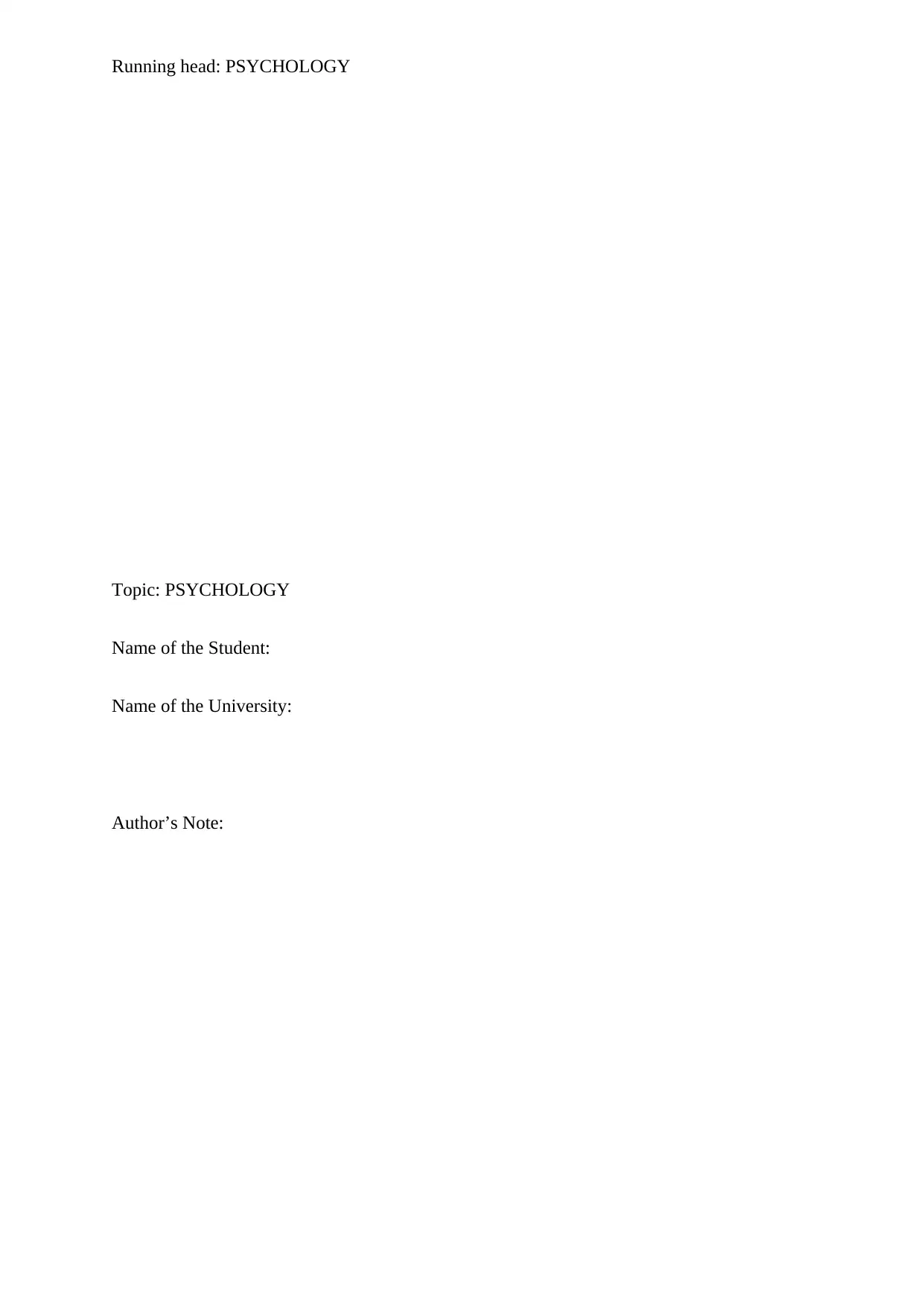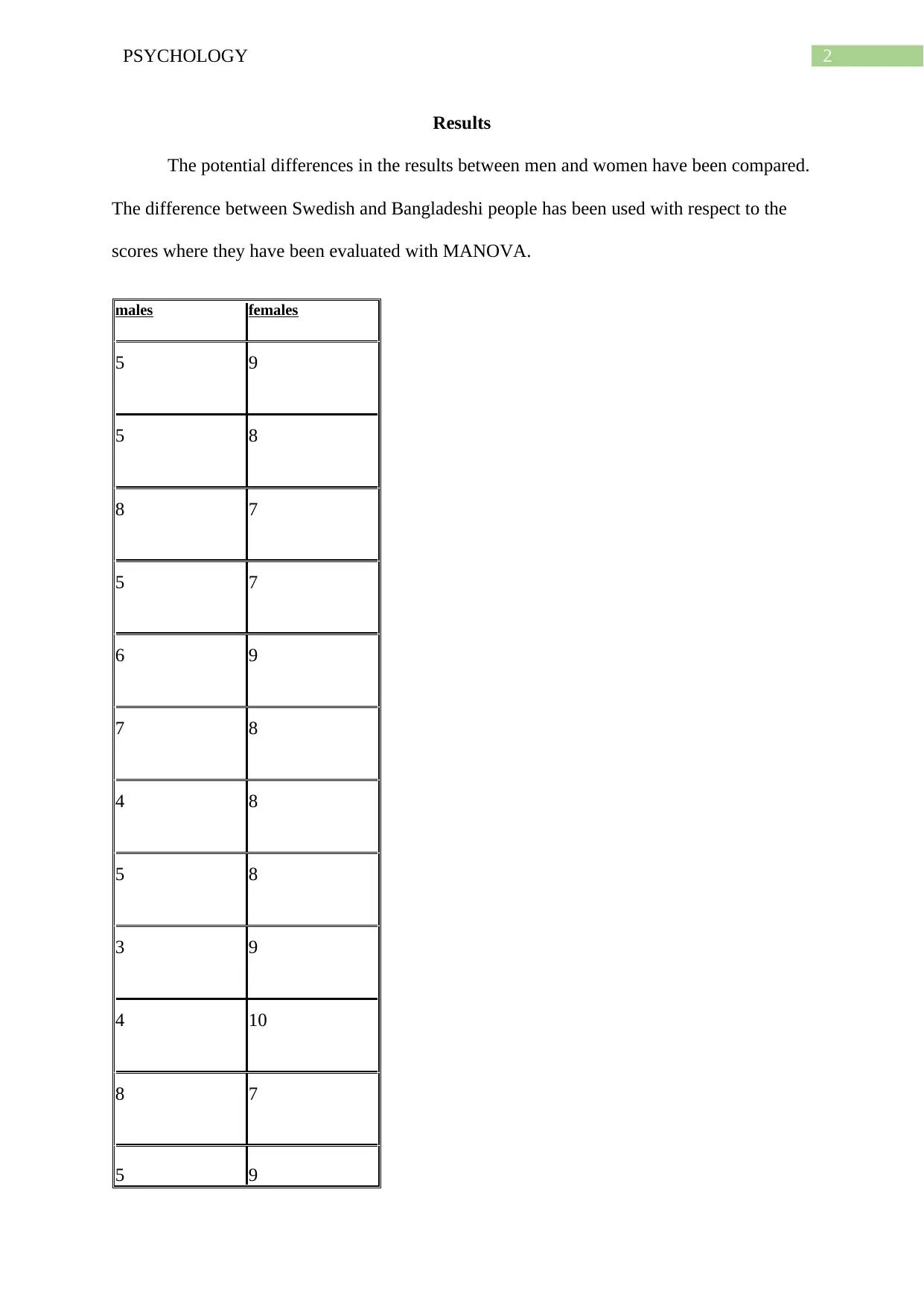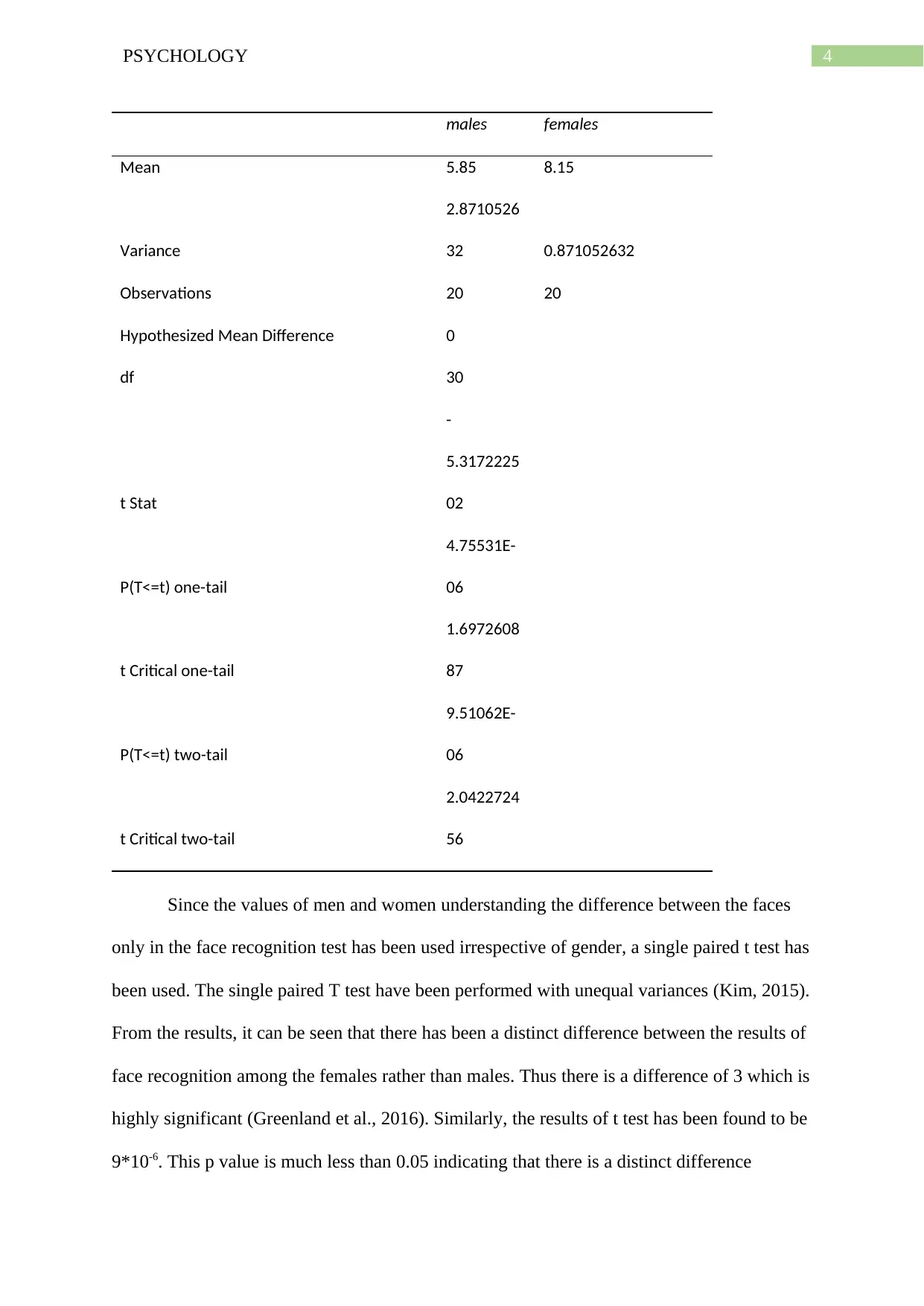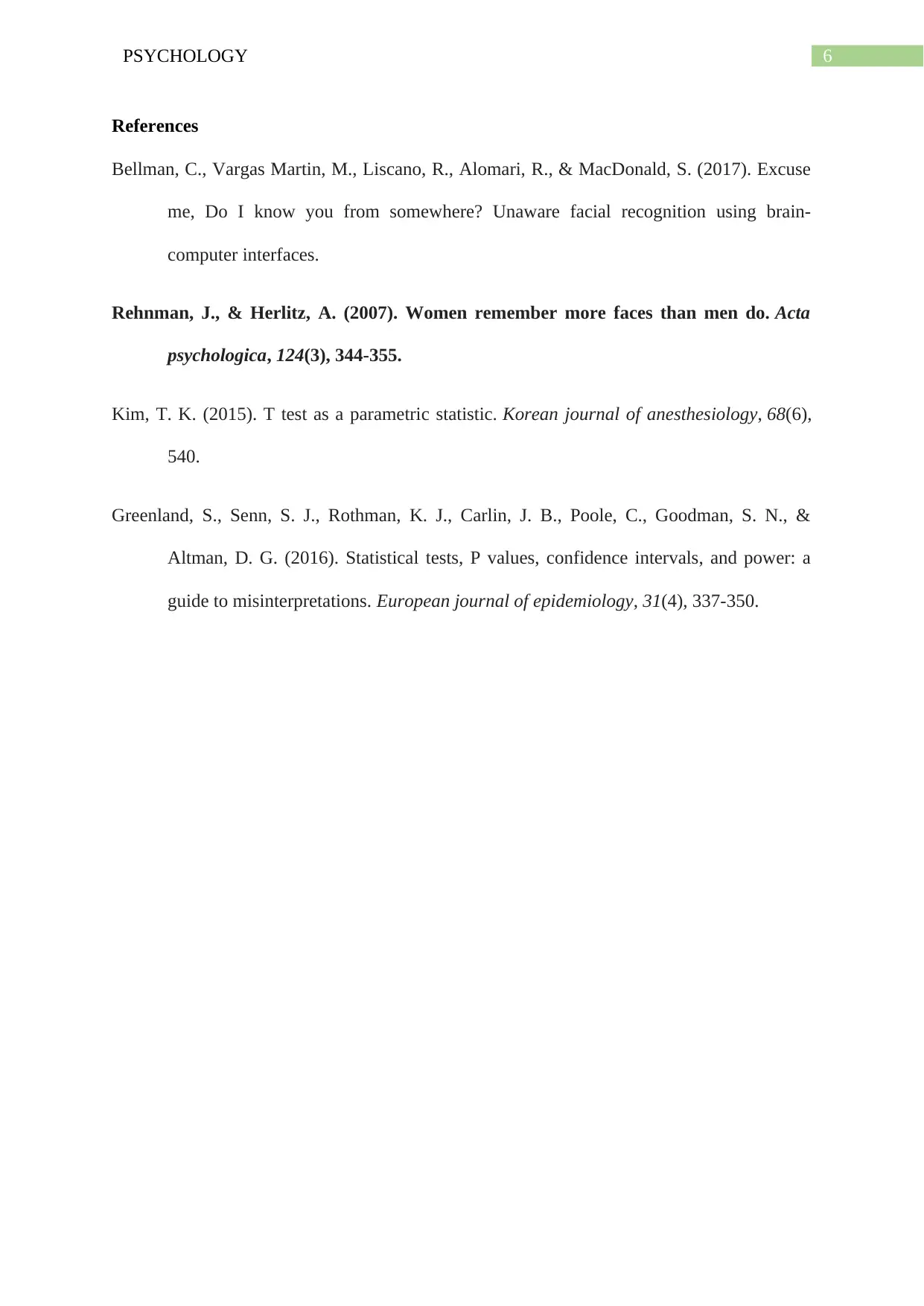Analysis of Facial Recognition: A Psychology Lab Report
VerifiedAdded on 2023/01/17
|7
|834
|76
Report
AI Summary
This psychology lab report investigates facial recognition, focusing on gender differences in memory and visual perception. The report includes an introduction to facial recognition technology and its applications, followed by a description of the methods used in an online experiment. The experiment involved participants completing facial recognition tasks with adult and child faces from Sweden and Bangladesh. The results section presents the data, comparing the performance of men and women using a t-test to analyze the statistical significance of the differences. The discussion interprets the findings, highlighting that women demonstrated superior facial recognition abilities compared to men. The report concludes with a list of cited references in APA format, including articles on facial recognition and gender differences in memory.
1 out of 7














![[object Object]](/_next/static/media/star-bottom.7253800d.svg)